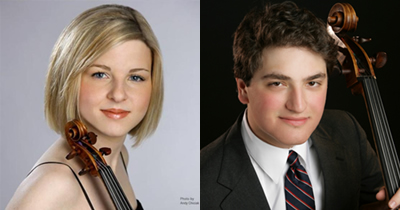It was good to see a substantial crowd of fully-vaccinated music lovers in attendance for Stephanie Childress‘ first appearance with the North Carolina Symphony. Her demeanor on the podium is solid, without affectation. Her conducting is clear, as long as the orchestra accustoms itself to having most of the downbeats go up rather than down. (Childress has spent much time in the pit with an opera orchestra, where such reversals of standard beat patterns are necessary so that those on stage can see the upward downbeats.) She knows what she wants from the music and how to make that happen.
Since all of December is often treated by media as the Christmas season, it seems natural to have a program of orchestral chestnuts for this early December “Friday Favorites” concert, even though today was the third consecutive day of 70-degree weather for this part of the country. This iteration of the NC Symphony’s “Friday Favorites” program contained Bach’s ”Brandenburg” Concerto No. 3 Respighi’s Ancient Airs and Dances, Suite No. 3, and Prokofiev’s Symphony No. 1, Op. 25. The opening work, which provided the event title in the NCS publicity, is, of course, not an orchestral work. It is and was played as a chamber music work with one performer to a part. This performance featured three each of violins, violas, and cellos, with continuo provided by an almost-inaudible harpsichord and a very audible string bass.
The harpsichord would have been heard to better advantage had it not been misplaced in the ensemble. It was on the right side of the group, behind the cellos, with its lid removed. The sound would have been better had it been behind the group’s center, with the keyboard to the conductor’s left, and with the lid in place and raised, so that the lid’s function to direct the instrument’s sound toward the audience could have helped. The use of a double bass (rather than a violone, which Bach would have used as the other half of the normal two-person continuo group) tilted the ensemble’s balance towards the bass end.
But then, this was not a HIP (historically-informed performance). While the opening and closing movements sparkled with their bright tempi and delightful interplay between the voices, the second “movement” was essentially two chords, decorated by the principal violinist’s roulade. While there are various interpretations of how to deal with Bach’s score, which indeed contains only those two cadential chords, there is general agreement that they represent only the closing two chords of a substantial slow movement. Given Bach’s mastery of the keyboard, one of the most likely possibilities is an improvisation in the relative key of E minor by the harpsichordist, with the strings joining on those last two chords. That’s not the only option, but most anything would improve on the two-chord option, even with a bit of violinist decoration.
While the stage was being reset for the final two works on the program, Childress gave some verbal program notes, which were helpful in the absence of any printed programs. Even when the audience for the NC Symphony’s Friday noon programs is traditionally made up of senior citizens (younger folks being at work or at school), they are now expected to all bring their cell phones so that they can scan a code to obtain the day’s program. But they dare not use their phones to access the program during the playing, lest an usher climb over several audience members to order the offender to cease and desist. (No, it wasn’t I!)
The third set of Ottorino Respighi’s Ancient Airs and Dances was played beautifully by the full string sections of the NCS. An accomplished violinist herself, Childress knows what strings are capable of, and molded the ensemble to perfection. The second movement, originally composed for lute by Giovanni Battista Besardo, received a particularly moving reading, in keeping with one of Respighi’s instructions for playing one section “Lento con grande espressione” (“very slowly, with great expression”).
The concert closed with Sergei Prokofiev’s “Classical Symphony” (Symphony No. 1, Op. 25). Similar in concept to Respighi’s putting a new stamp on much older music, Prokofiev decided that his first symphony should not be a large, Romantic-style work, but rather a 20th century work scaled on the lines of a symphony by Mozart. Its four movements follow classical form, albeit substituting a gavotte for the traditional Mozart minuet as the third movement. With added woodwinds, brass, and bravura timpani, Childress made this music all that Prokofiev could have wanted, infused with the sparkling rhythms, humor, and blend of new harmonies with the classical symphonic form.
Even masked, the NCS obviously enjoys “being back” as they responded to their guest conductor’s direction with verve.
The concert will be repeated on Saturday, December 4, with the addition of Igor Stravinsky’s Pulcinella Suite. See our sidebar for details.











